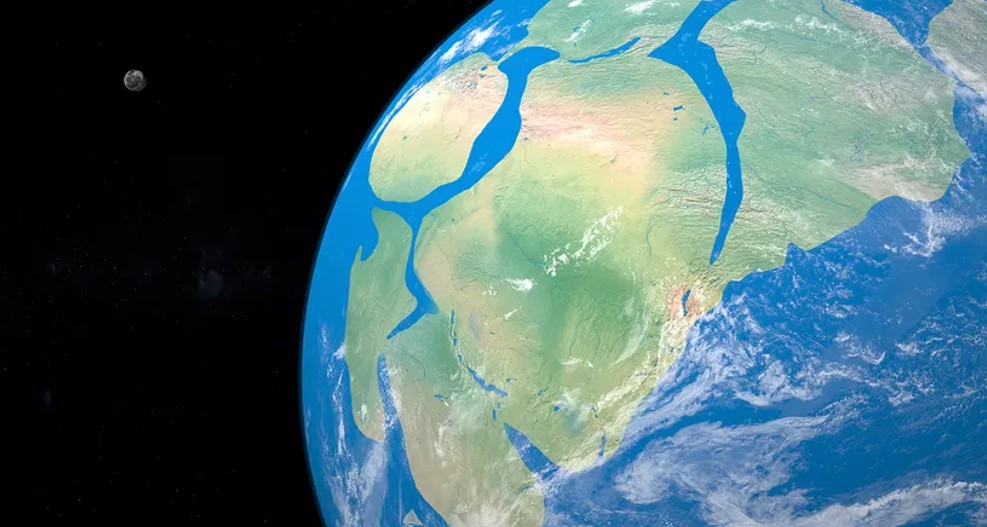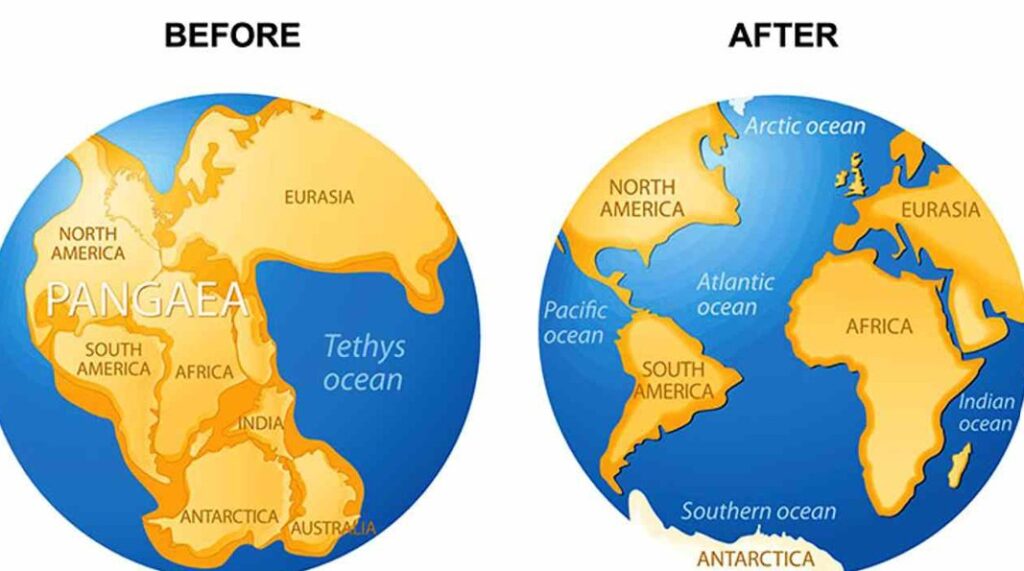
Ever gazed at a world map and felt a faint sense of familiarity, as if the continents might, with a gentle nudge, fit together like pieces of a colossal jigsaw puzzle? You’re not imagining it. Hundreds of millions of years ago, they did.
Welcome to the epic tale of Pangaea, the legendary supercontinent that once dominated our planet, changing the course of life and shaping the world we know today.
A World United: The Rise of Pangaea
Imagine a single, colossal landmass sprawled across the Earth, surrounded by a vast, single ocean known as Panthalassa. This was Pangaea, meaning “all lands” in ancient Greek, and it existed roughly between 335 and 175 million years ago, during the late Paleozoic and early Mesozoic eras.
This wasn’t Earth’s first supercontinent – others like Rodinia and Columbia came before it – but Pangaea is arguably the most famous and well-studied, offering a profound glimpse into our planet’s dynamic past.
The Great Unveiling: Alfred Wegener’s Vision
For centuries, the idea that continents could move seemed absurd. But in the early 20th century, a German meteorologist named Alfred Wegener dared to challenge convention. Fascinated by the apparent “fit” of the continents, he proposed the theory of “continental drift.” His idea was initially met with skepticism, even ridicule, because he couldn’t explain how the continents moved.
It wasn’t until decades after his death that the mechanism was discovered: plate tectonics. This revolutionary theory explains that Earth’s outer layer, the lithosphere, is broken into giant “plates” that are constantly, albeit slowly, moving, driven by convection currents in the molten mantle beneath. Wegener was right all along!
The Impeccable Evidence: How We Know
So, how do scientists piece together this ancient puzzle? The evidence is compelling and diverse:
The Continental Fit: The most obvious clue. South America tucks neatly into Africa, and other continents align beautifully when reconstructed.
Fossil Records: Identical fossils of ancient plants and animals (like the freshwater reptile Mesosaurus or the seed fern Glossopteris) have been found on continents now separated by vast oceans, indicating they once lived in close proximity.
Rock Formations and Mountain Ranges: Geologically similar rock strata and mountain ranges (like the Appalachians in North America and the Caledonian Mountains in Europe) line up perfectly when Pangaea is reassembled.
Paleoclimate Data: Evidence of ancient glaciers has been found in tropical regions of today (like India and Australia), suggesting these landmasses were once part of a much colder southern continent, closer to the South Pole.
The Slow-Motion Demo: Pangaea’s Breakup
Nothing lasts forever, not even supercontinents. Around 175 million years ago, during the Jurassic period, Pangaea began its slow, majestic demise. Driven by the relentless forces of plate tectonics, cracks appeared, magma welled up, and the supercontinent started to split.
First, Pangaea fractured into two major landmasses: Laurasia (which would become North America, Europe, and Asia) to the north, and Gondwana (which would become South America, Africa, Antarctica, Australia, and India) to the south. Over millions of years, these smaller landmasses continued to drift apart, rotating, colliding, and eventually forming the continents and ocean basins we recognize on our maps today.

Why Pangaea Matters (Beyond a Cool Fact)
Pangaea is more than just a geological curiosity; it’s a foundational concept for understanding our planet:
Biodiversity and Evolution: The formation and breakup of Pangaea significantly impacted the evolution and distribution of species. When continents merged, species could mix and compete; when they separated, isolated populations evolved unique traits, leading to new species.
Climate Patterns: The presence of a single supercontinent radically altered global ocean currents and atmospheric circulation, leading to vastly different climate zones than we experience today.
Earth’s Dynamic Nature: Pangaea is a powerful reminder that our planet is not static. It’s a living, breathing system constantly in motion, shaping and reshaping its surface over eons. Looking even further into the future, scientists predict that the continents will eventually converge again, forming new supercontinents like “Pangaea Ultima” or “Amasia” millions of years from now.
So, the next time you glance at a world map, take a moment to appreciate the incredible journey our continents have taken. From a unified landmass to scattered islands, and perhaps back again, the story of Pangaea is a testament to the Earth’s enduring power and the breathtaking dance of time.





